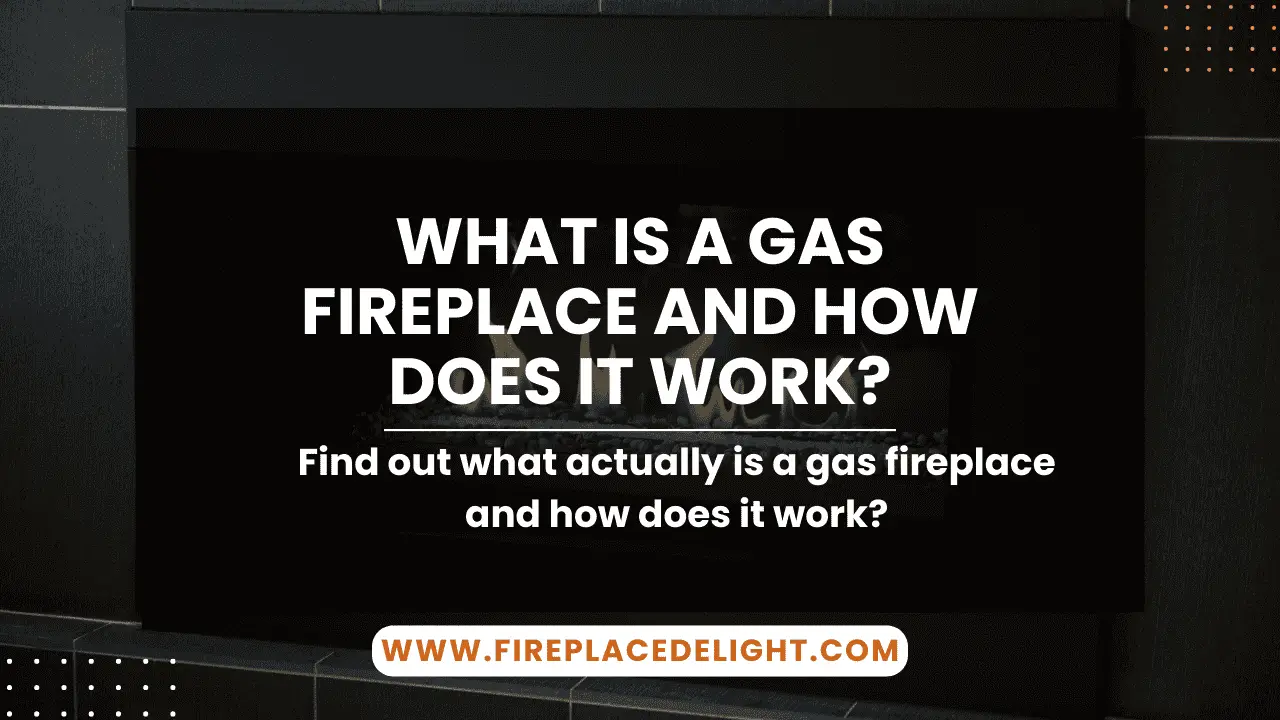Choosing a gas fireplace can feel overwhelming with all the options and technical details, especially if you’re unsure how they work or which type fits your home. I’ve been there too, but understanding the basics makes the decision much easier. In this guide, we’ll explore how gas fireplaces work, the differences between venting types, and important factors to consider. With this knowledge, you’ll be ready to find the perfect fireplace that combines warmth, style, and efficiency for your space.
Everything you need to know about gas fireplaces
A gas fireplace is a modern, efficient way to enjoy the warmth and ambiance of a fire without the hassle of wood. It uses natural gas or propane to produce clean-burning flames, often controlled with the push of a button or a remote. Unlike traditional wood-burning fireplaces, gas fireplaces require less maintenance, produce no ash, and heat your space more consistently. I love the convenience of mine, it’s quick, easy to use, and perfect for cozy evenings without the mess. In this guide, we’ll break down how they work and what makes them a great addition to your home.
How does a gas fireplace work?
Gas fireplaces are designed to provide warmth and ambiance with minimal effort. They operate using a combination of gas lines, ignition systems, and controlled airflow, creating a clean, efficient burn. Here’s how it all comes together:
Gas Supply
Natural gas or propane fuels the fireplace, flowing through a dedicated line connected to your home’s gas supply. This steady flow ensures consistent flames and heat output, making it incredibly reliable during colder months.
Ignition System
The fireplace ignites using either a standing pilot light or an electronic ignition system. Personally, I prefer the electronic ignition in my setup, it’s easy to use and saves energy by only sparking when needed.
Burner and Logs
Gas flows to the burner, where it’s evenly distributed to create the flames. Ceramic logs, designed to look like real wood, are placed over the burner to add a natural, cozy aesthetic while also dispersing heat efficiently.
Venting or Ventless Operation
Depending on the type of fireplace, the combustion byproducts are either vented through a chimney or directed back into the room in ventless models. Both systems are designed to ensure safety while maximizing heat output, which is one of the reasons I opted for a vented model in my living room.
A closer look at direct vent gas fireplaces
Direct vent gas fireplaces are a popular choice because they combine efficiency with safety. These units pull in fresh air from outside through one pipe and expel combustion byproducts through another, creating a sealed system. This design prevents indoor air contamination and ensures a steady, oxygen-rich burn. I’ve found direct vent fireplaces perfect for maintaining indoor air quality while providing consistent warmth, especially in well-insulated homes. They’re versatile too, as they can be installed on exterior walls or vented through the roof, making them a great option for modern living spaces.
A closer look at natural vent/b-vent gas fireplaces
Natural vent, or B-vent, gas fireplaces rely on a vertical chimney to expel combustion byproducts, similar to traditional wood-burning fireplaces. They draw air from the room for combustion, making them less sealed compared to direct vent models. While they offer a more classic fireplace feel, some heat is lost up the chimney. I’ve noticed that these fireplaces work best in homes with an existing chimney, providing ambiance and supplemental heat without extensive installation. However, they’re ideal for spaces where maintaining a traditional aesthetic is just as important as functionality.
Other things to consider
When choosing a gas fireplace, several factors can impact its performance, installation, and overall fit for your home. Knowing what to prioritize can make the decision easier and ensure you get the most out of your fireplace. Here are some key factors to keep in mind:
Heat Output
The heat output of a gas fireplace, measured in BTUs (British Thermal Units), determines how well it can warm your space. Consider the size of the room and whether you’re looking for supplemental heating or a primary heat source. Personally, I opted for a higher BTU model for my living room, and it’s been a game-changer on cold nights.
Venting Options
Venting plays a big role in safety and efficiency. Direct vent models are great for airtight homes, while natural vent fireplaces are better suited for spaces with existing chimneys. Ventless models are an option too, but they require careful monitoring for air quality.
Installation Costs
Gas fireplaces vary widely in installation costs depending on the type and complexity. For instance, direct vent systems might require additional wall modifications, while natural vent options can use existing chimneys, cutting costs. Knowing your budget upfront will help you choose the right fit.
Aesthetic Appeal
The look of your fireplace matters, as it becomes a focal point in your room. From realistic ceramic logs to sleek modern designs, gas fireplaces offer plenty of options. I chose a style that complements my decor, and it’s added so much character to the space.
Maintenance Requirements
Gas fireplaces are generally low maintenance, but regular inspections and cleaning are still necessary. Direct vent systems, for example, require less frequent upkeep than ventless models. Scheduling annual service has been my go-to for keeping things running smoothly and safely.
Bottom Line
Gas fireplaces offer a clean, efficient, and stylish way to heat your home while adding a cozy ambiance. Whether you choose a direct vent, natural vent, or another option, understanding how they work and considering key factors like heat output and maintenance ensures you’ll find the perfect fit. With the right fireplace, you can enjoy warmth and comfort with minimal hassle for years to come.
- 27 Farmhouse Fireplace Ideas That Bring Warmth & Charm - August 18, 2025
- 25 Fireplace Lighting Ideas to Illuminate Your Hearth - August 7, 2025
- How to Replace an Electric Fireplace Switch? - August 5, 2025



